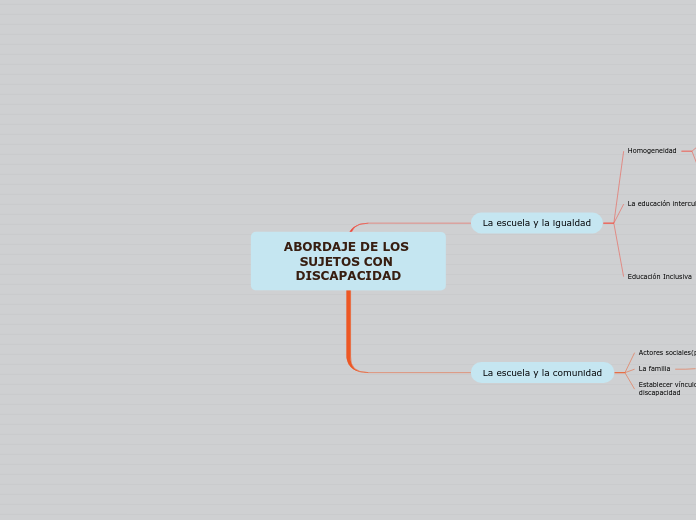Aula como lugar de convivencia
ABORDAJE DE LOS SUJETOS CON DISCAPACIDAD
To name your story, you have to think about the overall message and what you want your audience to understand from the story. Also, make it relevant and easy to remember.
La escuela y la comunidad
The middle of the story is where you add layers of complications that will lead to the end. Reveal more about the character's journey. Did their personality go through changes? How did they overcome the challenges? And as you build up the story’s central conflict, make it more personal to that character. Also, from the middle act, you have to lead into the final act.
Establecer vínculos con la familia en situación de discapacidad
La familia
Rol importante
Actores sociales(padres,vecinos,clubes etc)
Your character(s) need(s) motivation in order to solve the challenge(s).
Comunidad de aprendizaje
Why does your character need to confront this challenge? What does he/she expect to accomplish by solving it?
See a few examples:
- will marry in 3 days
- can fix the mistakes of the past
La escuela y la igualdad
In the beginning of the story (or the exposition), you will need to introduce the setting and characters. You might also want to introduce the main conflict. This part of the story is important because it gives the reader necessary background information and maybe even a first insight into a character’s personality.
Educación Inclusiva
Resoluciones 1664/17 y 311/16
NEEDM
Estudiantes con necesidades de apoyo
Valoración Funcional
PPI
Evaluación
ASPO
Rúbricas
Diseño de configuraciones y necesidades de apoyo
Secundaria
Primaria
Prácticas Educativas Inclusivas
Evaluación prácticas docentes
Procesos del aprendizaje del alumno
Inicial
La educación intercultural
Competencia cultural
Sociedad multicultural
Homogeneidad
The setting (time & place) of a story can change throughout the plot.
Escuela Sarmientina
Ley 1420
Diversidad
Sensory details include sight, sound, touch, smell, and taste. These details are important because they create depth in your setting.
See a few examples below:
- the smell of fresh bread
- the scent of freshly cut grass
- rain falling onto the windshield etc.
El otro como alguien a tolerar
Los otros como sujetos pleno de una marca cultural
El otro como fuente de todo mal










